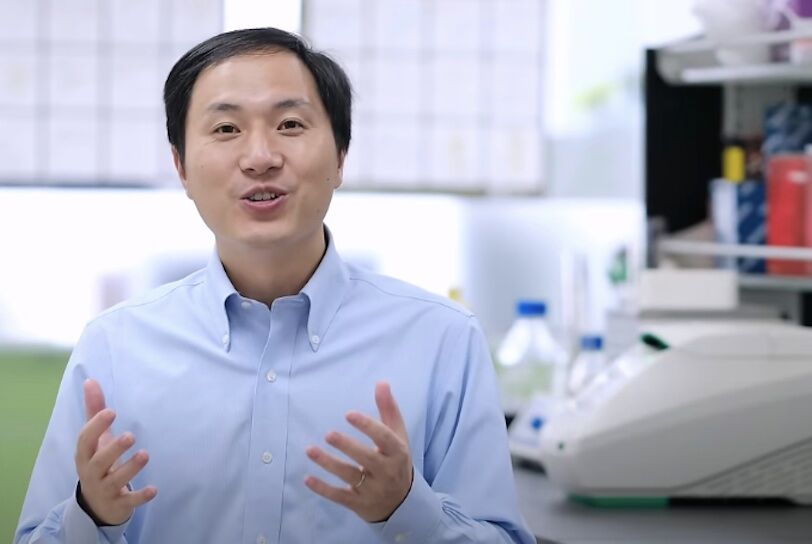
He Jiankui Photo: YouTube screenshot
Controversial Chinese scientist He Jiankui was punished when, in November 2018, he claimed to have used CRISPR gene editing technology to create a pair of HIV-resistant newborn twins. He now says he’ll use a different technique, called “base editing,” to prevent Alzheimer’s disease, a degenerative brain disease that affects 55 million people worldwide and can result in dementia and death.
Right now, U.S. law and universal medical ethics state that gene editing should only be used on laboratory animals, in order to test whether the technology might be safe for humans. But if He is successful, his research could create a breakthrough for preventing other incurable diseases.
Related:
In November 2018, He announced that his research team had used a gene editing method called CRISPR to alter the sperm cells of HIV-positive men. CRISPR removed mutations in sperm cells’s DNA that cause HIV and inserted a chemical combination that reportedly conferred HIV-resistance. The sperm cell was then used to fertilize an HIV-negative woman’s egg cell, which reportedly resulted in the birth of HIV-resistant twin girls named Lulu and Nana.
Never Miss a Beat
Subscribe to our newsletter to stay ahead of the latest LGBTQ+ political news and insights.
Though He says he has continued monitoring the girls’ well-being, genetic scientists worldwide condemned him for “unethically” using untested technology to alter the DNA of two newborns who could not consent (though their parents did). His critics noted that gene editing can leave accidental DNA mutations that can result in unexpected pain, illnesses, and death.
In December 2019, a Chinese court sentenced He to three years in prison and fined him 3 million Chinese yuan (about $434,000). He is also reportedly facing a lifetime ban from working on genetics, according to Time magazine.
Nevertheless, He says he’s now using a different gene editing method, called “base editing,” to prevent the progression of Alzheimer’s in a lab mouse. If his experiment is successful, it could take many years before the method is used to treat humans because it would first require government permits, ethical approvals, and numerous experimental trials before being approved for testing on human patients.
Nevertheless, a closer look at gene-editing technology provides an interesting view into how medical researchers may one day use it to cure many currently incurable diseases.
What is CRISPR and how is it different from “base editing”?
CRISPR, which stands for “clustered regularly interspaced short palindromic repeats,” is kind of a cut-and-paste tool for editing DNA. DNA refers to the chemical strands inside our cells that can determine things like our physical appearance and susceptibility to certain diseases.
CRISPR uses a “guide RNA” to identify specific chemical mutations in DNA that can cause hereditary diseases. CRISPR then uses a “Cas9 protein” to cut a DNA strand so that scientists can then alter the strand or introduce a new strand of chemical combinations to prevent these diseases from ever developing.
Base editing is very similar to CRISPR; it uses a guide RNA and a Cas9 protein as described above. But instead of altering or replacing DNA strands, the Cas9 protein uses an attached enzyme (a chemical reaction-causing protein) to change individual chemicals one-by-one in a DNA strand.
It might be helpful to think of CRISPR and base editing as two different kinds of “spell-checkers” that can detect misspellings (or disease-causing mutations) within DNA strands. CRISPR cuts out and replaces entire words all at once, whereas base editing changes individual letters inside of words one at a time.
Because CRISPR cuts and pastes entirely new chemical combinations into DNA, it sometimes results in “indels,” mistaken insertions and deletions that can inadvertently create harmful DNA mutations. Because base editing changes individual chemicals in a DNA strand, it’s considered more precise and less prone to resulting harmful mutations.

